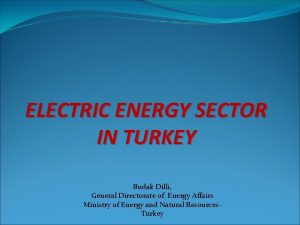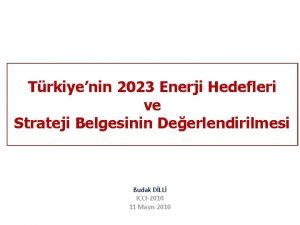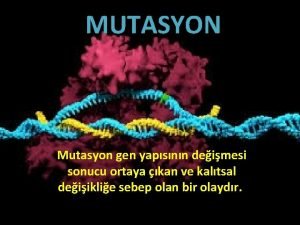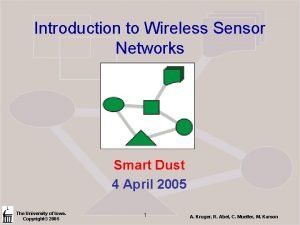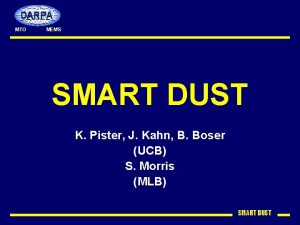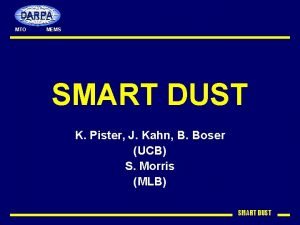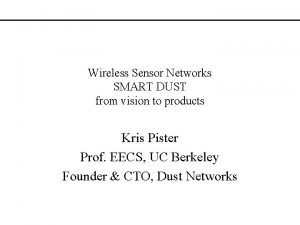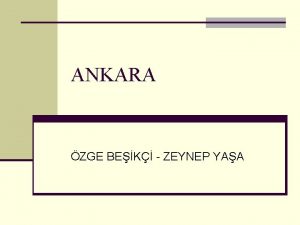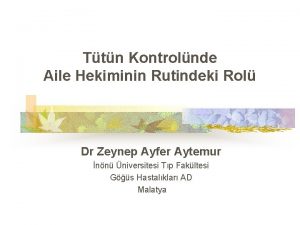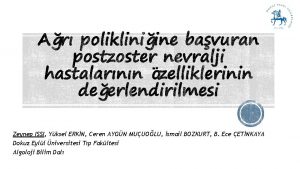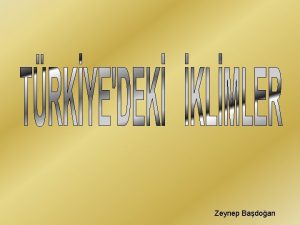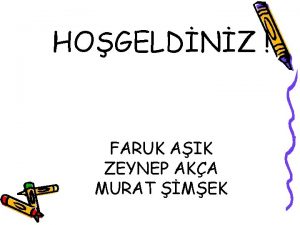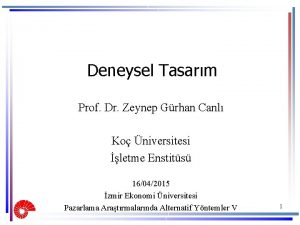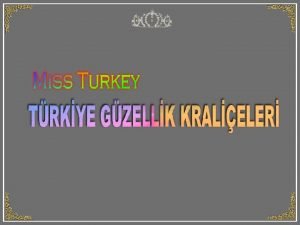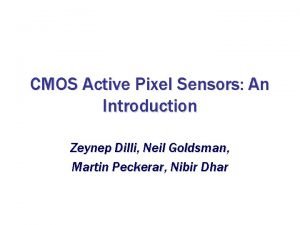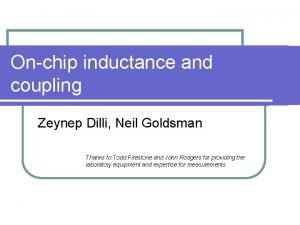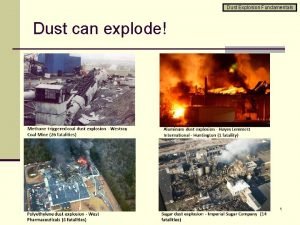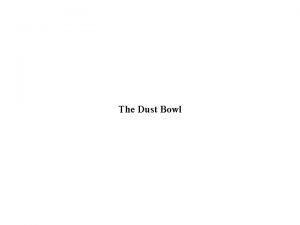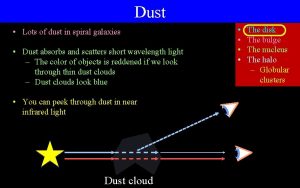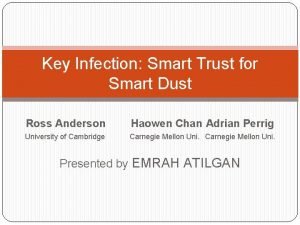Realizing 3 D Smart Dust Particles Zeynep Dilli





![Photodiodes: Design Issues n n Photocurrent=Responsivity [A/W] x Incident Power Responsivity= Quantum efficiency x Photodiodes: Design Issues n n Photocurrent=Responsivity [A/W] x Incident Power Responsivity= Quantum efficiency x](https://slidetodoc.com/presentation_image_h2/ecef07f2420185881d3d26ca4de574d3/image-6.jpg)










- Slides: 16

Realizing 3 D Smart Dust Particles Zeynep Dilli

Introduction & Outline MIT Lincoln Laboratories FDSOI Process: Adapted to chip stacking n 3 D Run in April 2005 n Outline: n ¨ System Description ¨ Process information ¨ Photodiodes: Design and Layout ¨ Simulation Results ¨ Layouts

Proposed System n 3 D system concept: Three tiers Sensor (Energy harvesting/Photosensor) ¨ Storage (Energy) ¨ Electronics (Local Oscillator and Output Driver) ¨

Proposed System n n n ip Submitted proposal for a self-powered local oscillator circuit Area Assigned: 250 microns by 250 microns Total size: 250 x 800 microns

Process information n n n 0. 2 μm, fully depleted Silicon-oninsulator Silicon islands 50 nm thick Three-metal process Three tiers stacked Through-vias Top two tiers turned upsidedown Figure adapted from MIT_LL 3 D 01 Run Application Notes
![Photodiodes Design Issues n n PhotocurrentResponsivity AW x Incident Power Responsivity Quantum efficiency x Photodiodes: Design Issues n n Photocurrent=Responsivity [A/W] x Incident Power Responsivity= Quantum efficiency x](https://slidetodoc.com/presentation_image_h2/ecef07f2420185881d3d26ca4de574d3/image-6.jpg)
Photodiodes: Design Issues n n Photocurrent=Responsivity [A/W] x Incident Power Responsivity= Quantum efficiency x λ [μm] /1. 24 ¨ n [μm] /1. 24 = 0. 51 Incident Power = Intensity ¨ n For red light, λ [W/μm 2] x Area [μm 2] Sunlight intensity ≈ 1 x 10 -9 W/μm 2 Quantum Efficiency = [# electron-hole pairs]/ [# incident photons] Depends on reflectance, how many carrier pairs make it to the outer circuit, and absorption ¨ At 633 nm (red light), absorption coef. ≈3. 5 e-4 1/nm amount of photons absorbed in 50 nm depth is (1 -exp(-αd)) ≈ 0. 017 ¨ η = 0. 017 x reflectance x ratio of non-recombined pairs ≈ 0. 017 x 0. 75=0. 013 ¨ Photocurrent=0. 013 x 0. 51 x 1 x 10 -9 x Area[μm 2] = 6. 63 p. A/μm 2 n n Major problem: The material depth is very small

Photodiodes: Design Issues n n Photocurrent=0. 013 x 0. 51 x 1 x 10 -9 x Area[μm 2] = 6. 63 p. A/μm 2 Photosensitive area is pn-junction depletion region width (Wd) times length Available implants: Body threshold adjustment implants (ptype CBN and n-type CBP, both 5 x 1017 cm-3); higher-doped source-drain implants and capacitor implants; undoped material is p-type, ~1014 cm-3. Two diode designs: CBN/CBP diode and pin diode (CBP/intrinsic junction) CBN/CBP diode Wd=0. 0684 μm; A=0. 5472 μm 2 ¨ Pin-diode Wd ≈ 1. 5 μm; A=15 μm 2; possibly problematic ¨ Layout: 2062 CBN/CBP diodes: 7. 48 n. A; 52 pin diodes: 5. 17 n. A ¨ n n To increase: Higher-intensity light; optimal wavelength (higher wavelength increases λ/1. 24, but decreases absorption) Expect about 10 n. A

Photodiodes: CBN/CBP Diode Layout

Photodiodes: pin diode layout

Operation n ip=10 n. A, C=30 p. F

Operation n ip=10 n. A, C=30 p. F

Operation n ip=10 n. A, C=30 p. F

Operation n ip=40 n. A, C=30 p. F

Layout: Tier 1, Local Oscillator

Layout: Tier 2, Capacitor Top plate: Poly Bottom plate: N-type capacitor implant, CAPN Extracted value: 29 p. F Expected value: 30 p. F

Layout: Tier 3, Diodes and Pads “GND” Oscillator output “VDD”
 61000-25000
61000-25000 Budak dilli
Budak dilli Kurbağanın sinek yakalayabilmek için uzun dilli olması
Kurbağanın sinek yakalayabilmek için uzun dilli olması On the grasshopper
On the grasshopper Smart dust military
Smart dust military Smart dust darpa
Smart dust darpa Smart dust darpa
Smart dust darpa Smart dust
Smart dust özge beşikçi
özge beşikçi Zeynep turgut
Zeynep turgut Nykt sakız
Nykt sakız Ceren aygün muçuoğlu
Ceren aygün muçuoğlu Zeynep derin kahya
Zeynep derin kahya Zeynep başdoğan
Zeynep başdoğan Zeynep aka
Zeynep aka Denek içi dizayn nedir
Denek içi dizayn nedir şebnem ünal 1979 türkiye güzeli şimdi ne yapıyor
şebnem ünal 1979 türkiye güzeli şimdi ne yapıyor
